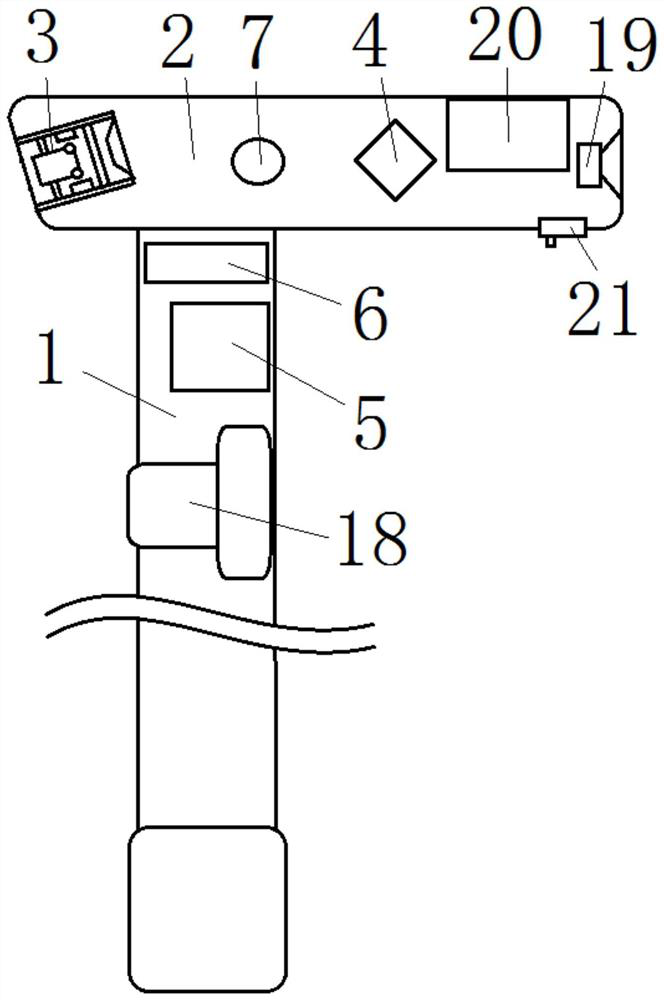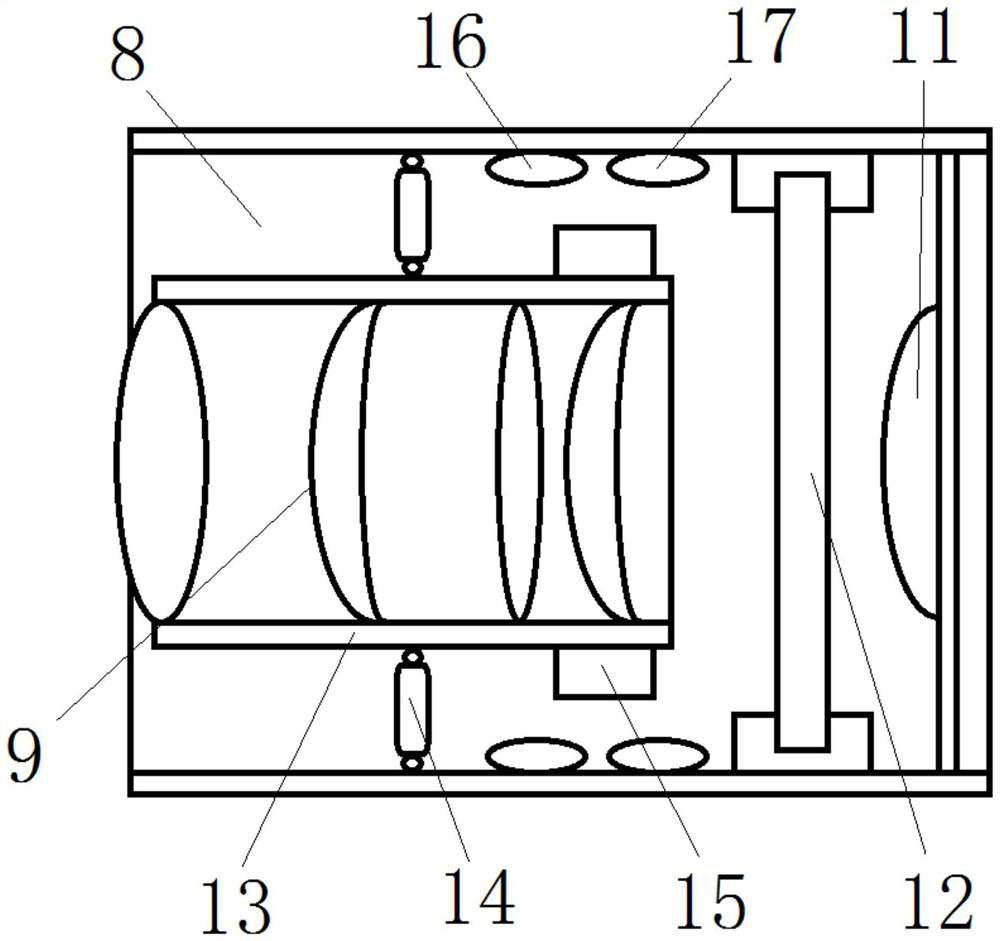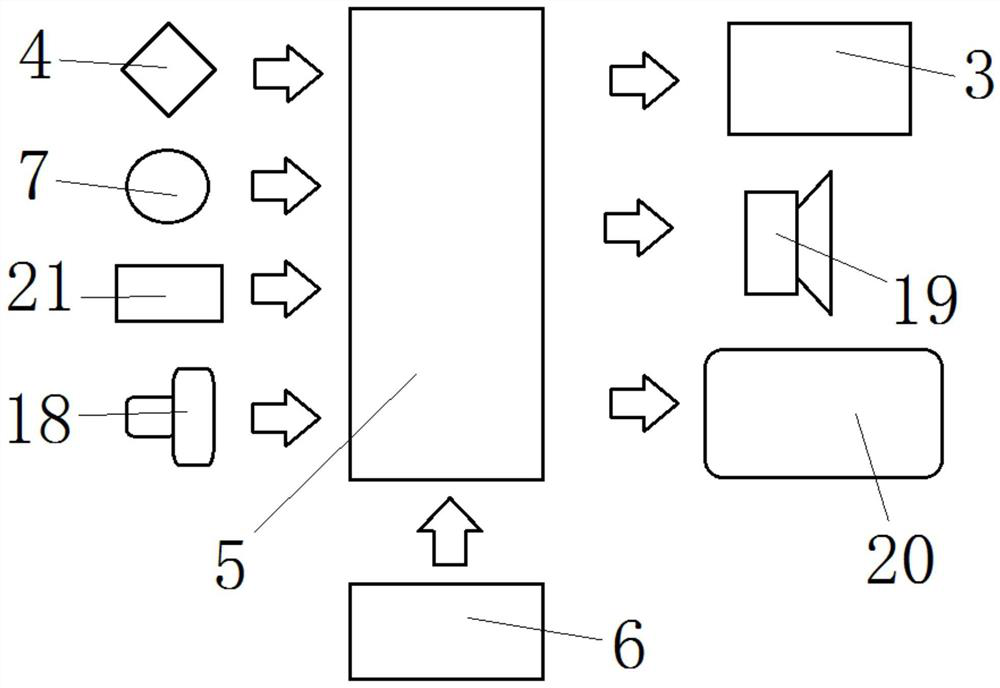a rehabilitation crutch
A technique of crutches and canes, applied to crutches, printing devices, instruments, etc., which can solve problems such as difficulty in starting, freezing gait, unstable posture, and difficulty walking an inch
- Summary
- Abstract
- Description
- Claims
- Application Information
AI Technical Summary
Problems solved by technology
Method used
Image
Examples
Embodiment 1
[0017] according to figure 1 , image 3 , a rehabilitation crutch, which mainly includes: a stick body 1, the stick body 1 is a tubular structure perpendicular to the ground, a handle 2 is vertically connected to the top of the stick body 1, the handle 2 is a cavity structure, and The cavity in the handle 2 communicates with the inside of the stick body 1; the anti-shake projector 3, the anti-shake projector 3 is arranged inside the cavity of the handle 2, and passes through the front end of the handle 2 The window projects a stable indicator light spot to the ground ahead; the acceleration sensor 4 is arranged inside the cavity of the handle 2, and is used to collect the shaking state of the stick body 1; the controller 5, the controller 5 The input end is electrically connected with the acceleration sensor 4, and the output end of the controller 5 is electrically connected with the anti-shake projector 3, and is used to control the anti-shake projector 3 according to the sh...
Embodiment 2
[0020] Both sides of the handle 2 are provided with capacitive switches 7 , and each of the capacitive switches 7 is electrically connected to the controller 5 .
[0021] In the above settings, the capacitive switches 7 on both sides of the handle 2 are used to collect the gripping habits of the patient. Because the left and right hands hold the handle 2 in different areas, the capacitive switches 7 on both sides can be used to collect the left grip of the patient. It is still held by the right hand. When the left hand is held, the controller 5 will shift the projected light spot to the right through the anti-shake projector 3, while the right hand holds the spot projection direction in the opposite direction, thus ensuring that the light spot image can be presented on the patient's Right in front, to achieve the purpose of humanized design, to ensure that users can walk in a straight line.
Embodiment 3
[0023] according to figure 2 , the anti-shake projector 3 is composed of a lens barrel 8, a lens group 9, an anti-shake mechanism, a light source 11, and a spot lens 12; the lens barrel 8 is fixedly connected to the front end of the handle 2, and the lens barrel 8 The axis forms an included angle with the ground in front; the anti-shake mechanism is coaxially arranged inside the lens barrel 8, the light source 11 is fixedly arranged at one end of the lens barrel 8 inside the cavity of the handle 2, and the light spot The lens 12 is fixedly arranged between the lens group 9 and the light source 11 ; the anti-shake mechanism and the light source 11 are electrically connected with the controller 5 .
[0024] The anti-shake mechanism includes a fixed ring 13 coaxially wrapped on the outer wall of the lens group 9, and a plurality of radially arranged tension springs 14 are uniformly distributed around the circumference of the fixed ring 13, and the tension springs 14 are connecte...
PUM
 Login to View More
Login to View More Abstract
Description
Claims
Application Information
 Login to View More
Login to View More - R&D
- Intellectual Property
- Life Sciences
- Materials
- Tech Scout
- Unparalleled Data Quality
- Higher Quality Content
- 60% Fewer Hallucinations
Browse by: Latest US Patents, China's latest patents, Technical Efficacy Thesaurus, Application Domain, Technology Topic, Popular Technical Reports.
© 2025 PatSnap. All rights reserved.Legal|Privacy policy|Modern Slavery Act Transparency Statement|Sitemap|About US| Contact US: help@patsnap.com



